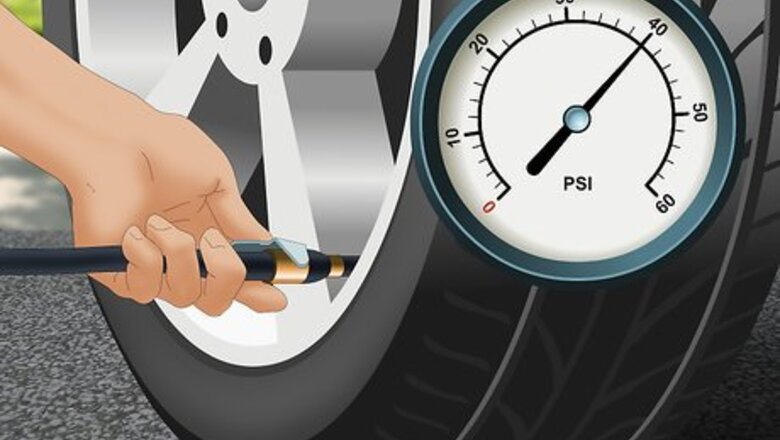
views
X
Trustworthy Source
National Highway Traffic Safety Administration
U.S. government agency responsible for writing and enforcing Federal Motor Vehicle Safety Standards
Go to source
A flat tire will certainly leave you stranded, but even losing a little tire pressure can have big consequences. Low tire pressure causes your vehicle to be harder to handle and even costs you more in gas.[2]
X
Trustworthy Source
FuelEconomy.gov
Official source for the U.S. government for fuel economy information
Go to source
If you are struggling to keep air in your tires, you may have a leak.
Locating a Leak without Water

Inflate the tire. In order to find a leak the tire must be properly pressurized. You should inflate your tire with air until it reaches the appropriate pressure (measured in psi) specified in your vehicle’s service manual or on the vehicle's door placard on the driver-side door.
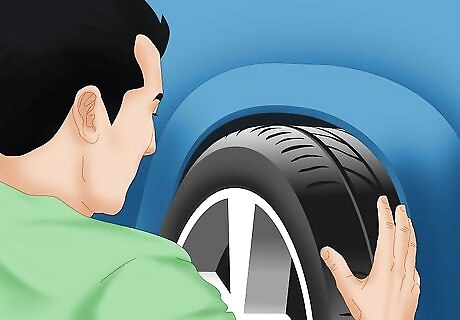
Visually inspect the tire. Before moving on to more time consuming techniques, you should take a moment to look at your tire. If you notice any holes, cuts, or objects protruding from tire then you have found your leak.
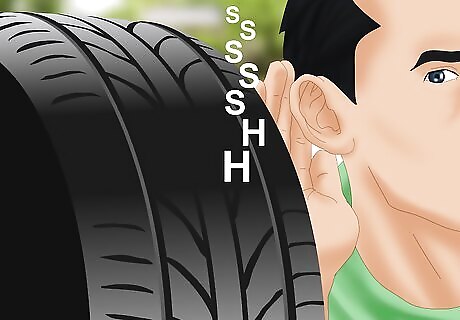
Listen for a hissing sound. Even if you aren't able to see the problem right away you might be able to hear it. A hissing sound is a clear sign that air is leaking from your tire, and can help you locate the leak.
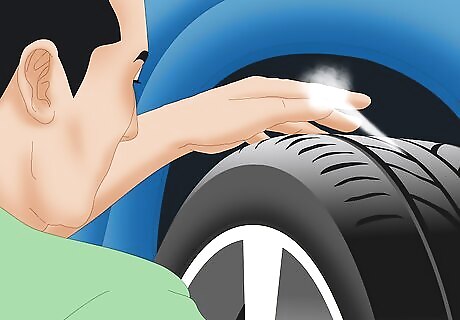
Feel around the tire for air. If you run your hands over the tire carefully you may feel the leak even if you can't hear or see it.
Locating a Leak with Soap and Water

Mix soap and water. If you followed the steps above and you were not able to easily find the leak don’t fear. Spraying the tire with a little soapy water or window cleaner may help. If you see bubbling at any place on the surface of the tire then you have found your leak.
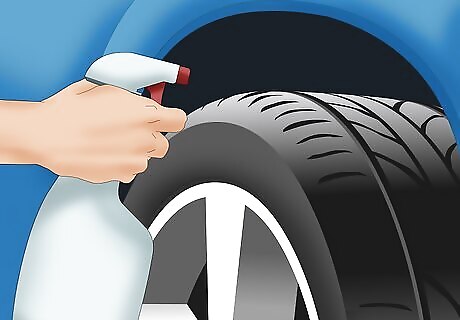
Cover the tire with the soap and water solution. You can use a spray bottle to spray the tire, or if a spray bottle isn’t available you can just pour the mixture over the tire.
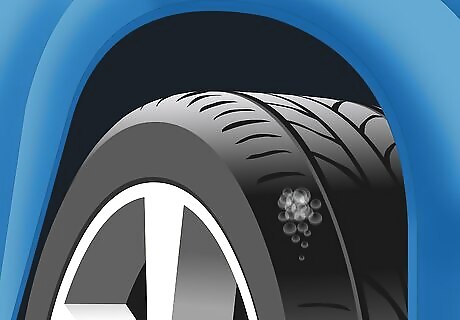
Watch for bubbles. As air escapes the tire and encounters the soapy water mixture it will form soap bubbles. If you notice the soapy water bubbling at any particular place on the tire, you have found your leak.
Locating a Leak by Submerging the Tire

Pull the car onto level, solid ground. You do not want the car to roll or sink once you have it jacked up.
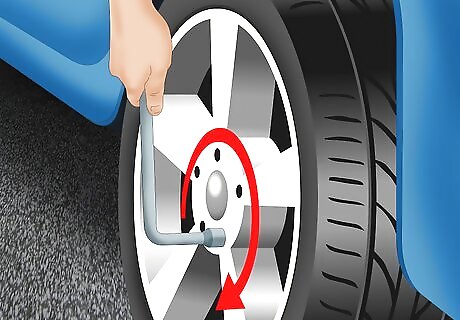
Loosen the lug nuts with a lug wrench (tire iron) or impact wrench. It is important to remember to loosen, or break, the lug nuts before you jack up the vehicle. This way the weight of the vehicle is still on the wheels and it prevents them from spinning dangerously while you turn the lugs.
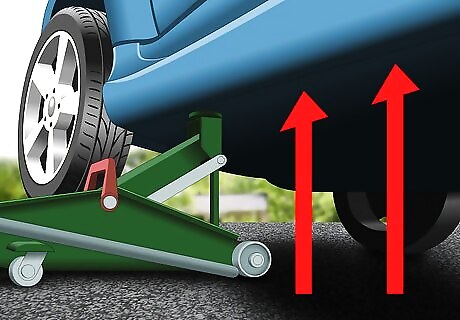
Jack up the car. Once the lugs have been loosened, it will be necessary to jack the car up so that the wheels can be removed. As mentioned above, this should be done on level concrete or some other hard, level surface. Some important things to remember when jacking up the care are: Your service manual will recommend jacking points The most common way to elevate the car is a floor jack, or trolley jack. If you are unsure how to use one visit Lift a Car Using a Trolley Jack. You should use jack stands to stabilize the car. A good tutorial on jack stands can be found at Use Jack Stands. If you have access to a hydraulic lift it will save you time.
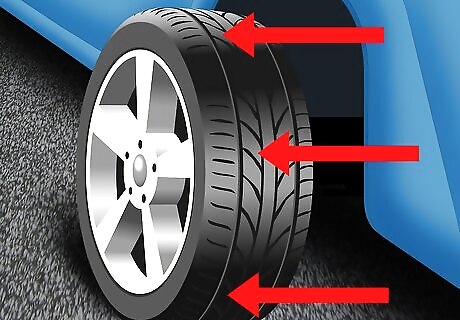
Remove the wheel. At this point, the lugs may be loose enough to remove by hand. If not, finish removing the lugs with the lug wrench or impact wrench. Once the lugs are removed, pull the wheel off of the wheelbase. If you are uncomfortable removing a wheel, read about how to Remove Lug Nuts and Tires.

Submerge the tire in water. You can use a small kiddie pool, bathtub, or any other container large enough to hold the tire. You should add water until the tire is completely submerged and then allow the water to settle.
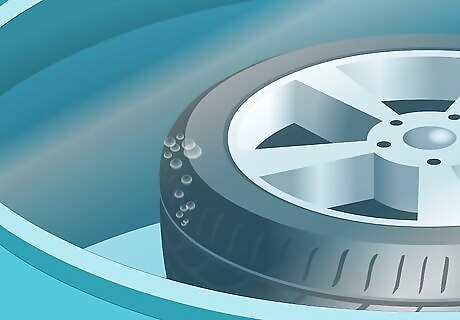
Watch for air bubbles. Once the water has settled you might notice air bubbles escaping from the tire. If so, you have found your leak.
Fixing the Leak
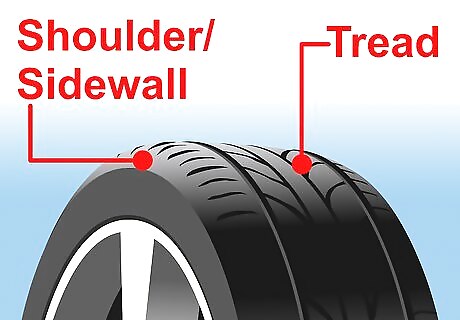
Determine the severity of the leak. Some leaks can be repaired, but leaks on the shoulder or sidewall of the tire should never be repaired. If you have a puncture in the tread area that is less than 1/4" in diameter then a repair may be your best option. If you are unsure of whether to replace or repair the tire consult a professional.
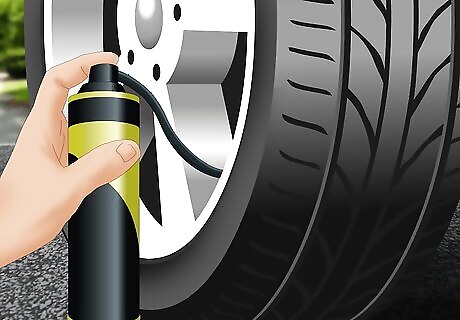
Fix the leak yourself. Some people prefer to fix leaks on their own. To do this you can patch your tire, or for smaller leaks you can use a tire sealant such as Fix-A-Flat for a temporary fix.
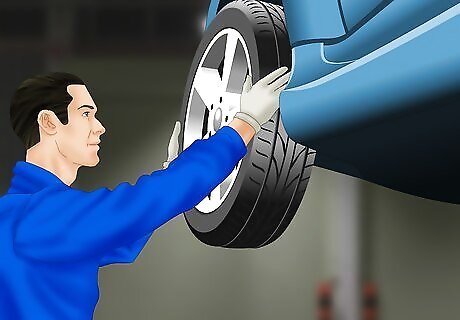
Take your vehicle to a professional. If you aren't able to fix the leak yourself you should take it to a professional tire shop. If it is a slow leak it may be safe for you to pump the tire up and drive to the shop. Otherwise, it may be necessary to have your car towed to the tire shop.

















Comments
0 comment